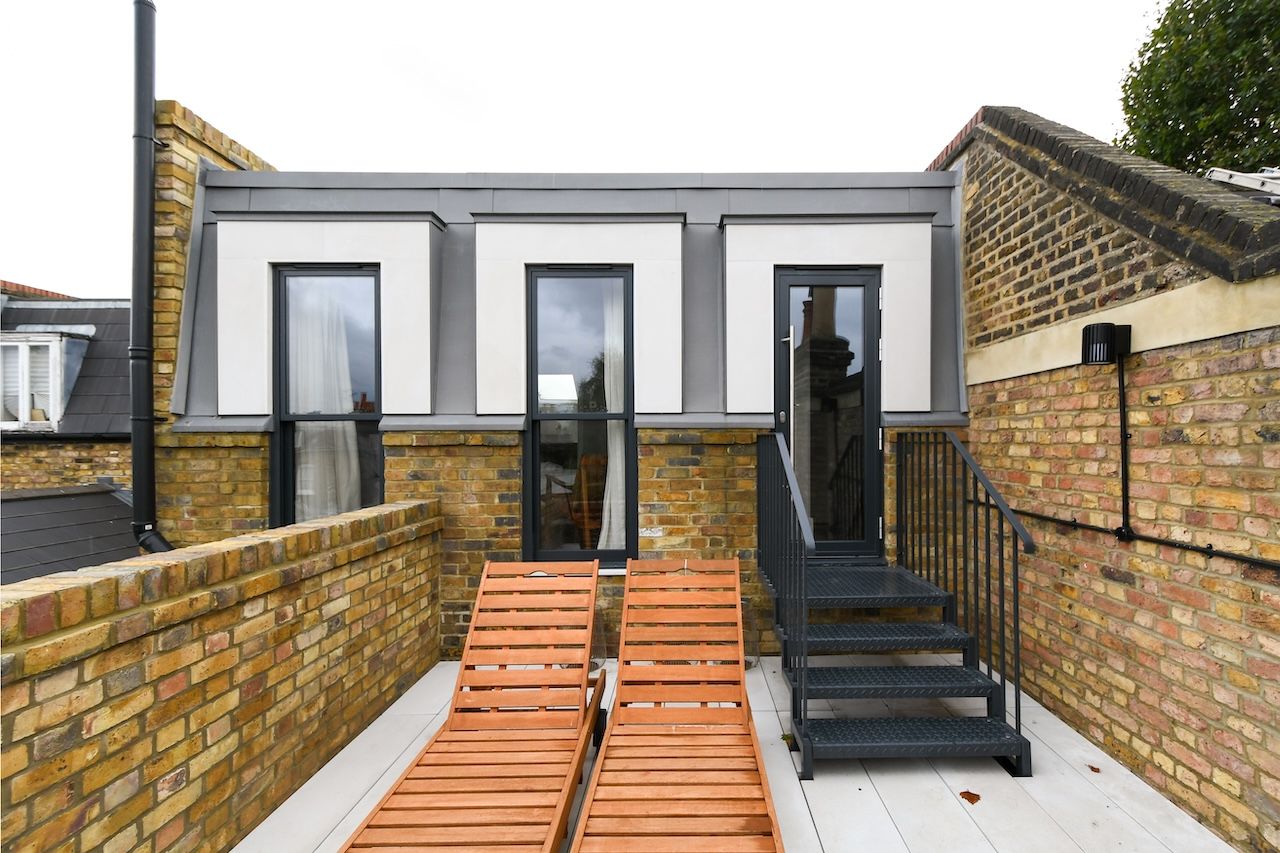What is a Build-Over Agreement?

What is a Build-Over Agreement?
What is a build-over agreement?
When considering a rear extension, side extension, basement or garage conversion for your property it might be necessary to obtain a build-over agreement (BOA) if your design plans involve building over, or in close proximity to, any part of a public sewerage network.
Build-over agreements were introduced in 2011 when the previously private areas of the sewerage network were awarded to water and wastewater companies. This was in the interest of public health and safety and the responsibility for the integrity of the public sewerage system now falls to the local water provider.
There are a few very good reasons for obtaining a BOA. First, at the time it will ensure the building work is carried out safely and minimizes the risk of damage to either the water authority’s assets or those of the homeowner. Additionally, it is worth noting that any damage caused to the water provider’s pipework during a build-over without permission would be at the expense of the homeowner. Finally, evidence of a build-over agreement for recent renovations might be requested by potential buyers in the future.
Depending on the class of the build-over, which relates to the diameter of the drainpipes in question, the cost can range between £70 (Class 1) to £410 (Class 2) to £495 (Class 3).
How to get a build-over agreement
A build-over agreement is the permission given by the local water and wastewater provider to build over a public drain or sewer. The most common provider in London is Thames Water and the process is straightforward.
First, there are three classes of BOA. Before beginning the application you must determine which class your building work will come under.
Class 1 covers sewer pipes with an internal diameter of 150mm or less.
Class 2 covers sewer pipes with an internal diameter of 151mm to 375mm.
Class 3 covers sewer pipes with an internal diameter over 375mm.
Once this information is obtained an application can be made via the water provider’s website. They require the following documents:
- A site map indicating boundary lines.
- Floor plans indicating existing and proposed drainage, i.e. sewer pipes, manholes, sewer flow direction, any private connections onto the sewer.
- Sectional drawings, plans that show foundation design in relation to the relevant pipework.
- Plans for piling foundations and method statement (if applicable).
- Plans for raft foundations and their structural calculations (if applicable).
Except for the first document that will be in your possession (the property deeds), the others will be provided by the structural engineer assigned to your renovation project.
Payment is made online at the point of application. The application is processed within 21 days, and for Class 1 applications, it is now complete.
For Class 2 applications, a pre-construction survey is the next step. The water provider will be in contact within another ten days to assess the condition of the sewer before construction can start. This assessment is carried out via a CCTV survey.
For Class 3 applications, an engineer will assess the sewer for any repair work before construction can begin.
In both cases, if there are no issues reported from the surveys, construction can begin.
Following the building work, surveys are required once more, CCTV for Class 2 and an engineer inspection for Class 3, to ensure no damage has occurred during the project. These checks are usually completed within ten days of notification.
Once the building work has been approved, the build-over agreement is issued. This takes 21 days for Class 1 and 2, and up to 6 months for more complex Class 3.
Building over a drain or public sewer
Before embarking on a ground floor extension project that requires building over, for example; a side extension, rear extension, basement conversion or garage conversion, there are a number of crucial factors to consider. These factors can have an impact on the approach to the project, the authority requirements, or the design.
First, what type of drain are you building over? If you are unsure, drainage records can be obtained from the water authority or local council, although these can be inaccurate if your property pre-dates 2011. Or a drainage expert can map the drains using a CCTV survey.
A private drain is a pipe serving your own property and located within the boundary of it. A build-over agreement is not necessary for private drains. Pipework will be inspected for safety and building work approved as part of the planning permission for your extension.
A public drain is maintained by the water authority and is any pipework that serves another property. Public drains may run within your boundary but are still classed as public. If your building work involves building within 1m of a public drain, you will need to obtain a build-over agreement from the local water authority.
A lateral drain is a pipe serving your property but is located outside the boundary of it. While it is unlikely you will plan to build over a lateral drain, your plans might involve building within 1m of it, thus requiring a BOA. A public sewer is also maintained by the water authority and requires permission for building work within 3m.
For public drains and sewers, prior to permission, the water authority will need to inspect the existing pipework for its condition and integrity, assess the risk of damage to it or potential failure, and ensure it is still accessible for future maintenance. As well as protecting their own assets, this inspection is of benefit to the homeowner as any failure in the drain could result in damage to, or even collapse of the new structure.
Besides the safety and integrity of the public drainage system, access to it must be considered. The Government Building Regulations document H4, p.49, section 1.3 states “buildings or extensions should not be constructed over a manhole, inspection chamber or other access fitting on any sewer (serving more than one property).”
Manholes cannot be built over, but depending on area available, it might be possible to apply for a minor diversion and to relocate the manhole itself. If this action is approved by the water authority the responsibility will fall to the homeowner, however, moving a manhole and diverting a drain can have a significant impact on the project budget.
(Drainage and Waste Disposal H4, HM Government, 2015) also restricts building work over specific types of soil, i.e. fine sands, silts and peat. These materials are not commonly found surrounding sewerage networks in Greater London.
Although restrictions can pose a challenge, at houseUP we like to explore all avenues in an effort to find solutions.
Typical house drainage layouts
What if your build-over agreement is refused?
Most build-over agreements in Greater London are straightforward, and at houseUP we strive for the administration process to be as stress-free for you as possible. Although most well-planned build-over agreement applications are granted, there are three potential obstacles that could impede the agreement:
- Manholes. These cannot be built over, but in some instances, they can be relocated.
- Strategic sewers, sewers that carry waste from a large number of properties. It is unlikely, however, that there is one located under the area you wish to extend or renovate.
- A pressurised sewer. These are more common in remote housing areas, rather than London.
These obstacles can usually be identified prior to submitting an agreement request and can be factored into the design plans, thus minimising the risk of refusal. However, should the build over agreement be refused, depending on feasibility and budget, building plans can be revised and an application resubmitted.
Retrospective build-over agreements
We strongly suggest obtaining a build-over agreement before commencing any building work of your own. In line with our commitment to best practice, houseUP would not take on any project without the requisite permissions in place.
With a BOA in place, you can be sure that the construction can be carried out safely and that you are in cooperation with your water company. A lack of compliance could lead to unnecessary costs, the demolition of any unauthorised structures, or even legal action.
As build-over agreements only became a requirement as recently as 2011, extensions built prior to this may not comply with the current build-over regulations. A retrospective BOA will assess the structure and seek to legalise the construction by ensuring compliance with the regulations in place.
If you are planning on selling a property with an extension built prior to 2011, or altering an existing extension built prior to 2011, a retrospective build-over agreement will be necessary.
Build-over agreements: Frequently asked questions
- Who issues a build-over agreement?
The local water and wastewater services provider. For most properties in Greater London, this is Thames Water.
- What happens if you don’t get a build-over agreement?
Without a BOA, the water authority has the right to take down any unauthorised building work that is an obstruction to their access. Furthermore, they will not take any financial responsibility for damage caused to their property or yours.
- Do I need a build-over agreement for a conservatory?
If your building plans require building over an existing drain or sewer, then yes.
- When did build-over agreements become a requirement?
In 2011, when water companies were awarded private areas of the sewerage network, BOAs became necessary. The aim was to better monitor and maintain sewer lines.
- How close can I build to the main sewer line?
Within 3 metres of a public sewer and within 1 metre of a public lateral drain.
- Is it illegal to build over a sewer?
It is not illegal to build over a sewer. However, building over a sewer without the appropriate permissions can have costly repercussions.
houseUP, Design and Build services
With our bespoke Design and Build package, you can expect our partner architects to have experience of house extensions in your area of London. This means specific knowledge of local layouts, relationships with local authorities, and extensive experience in permissions applications, including build-over agreement applications.
If you are considering a house extension and think you might require a build-over agreement, we can answer your questions. At houseUP, we pride ourselves on our exceptional customer care and attention to detail, we are prepared to guide you through every step of your extension journey with us.
Gen is managing director and chief of digital strategy at houseUP. She has a background in information security and product management in tech startups.

